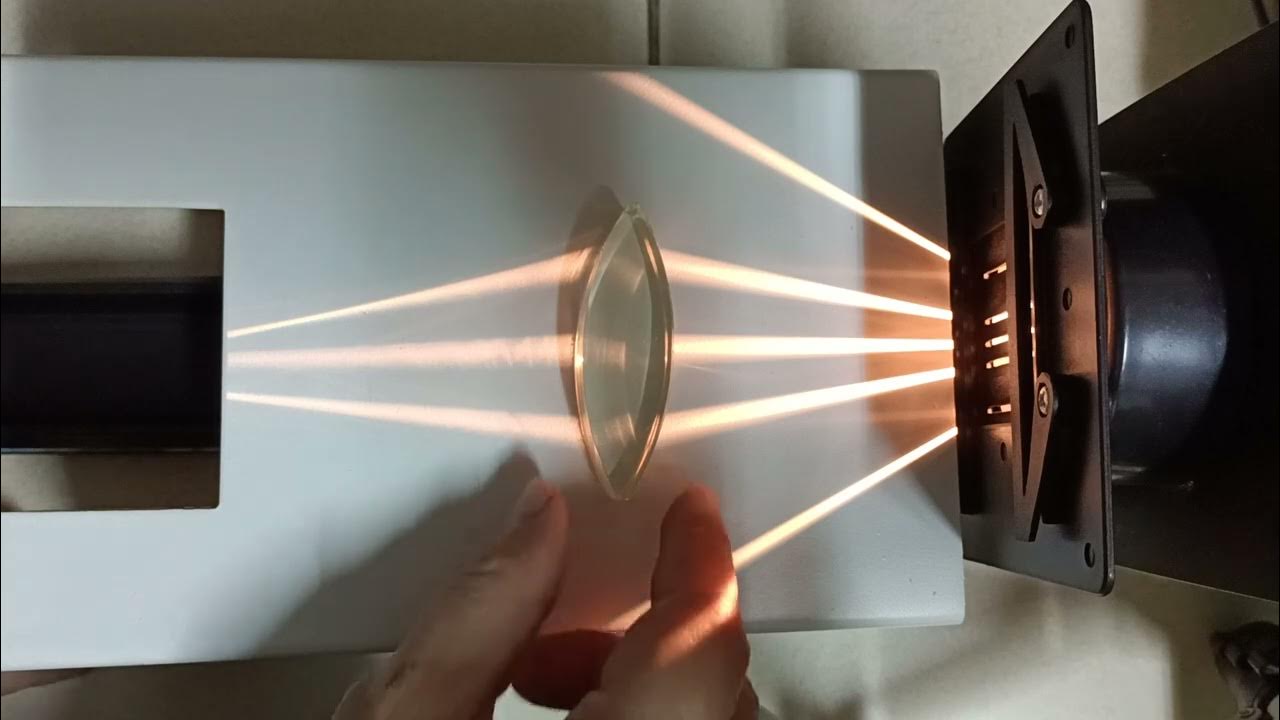Basic Optical Laws - Reflection - Refraction - Snells Law
Summary
TLDRThis lecture explores fundamental concepts of optics, focusing on reflection and refraction. It explains the law of reflection, illustrating that the angle of incidence equals the angle of reflection. The discussion on refraction highlights the bending of light as it transitions between different media, defined by refractive indices. Snell's Law is introduced, relating the angles of incidence and refraction based on the refractive indices of the media. The speed of light in various materials is discussed, emphasizing its impact on optical behavior. This comprehensive overview lays the groundwork for understanding optical phenomena.
Takeaways
- 😀 Light travels in a straight line at a speed of approximately 3 x 10^8 meters per second in free space.
- 🔍 The speed of light varies depending on the medium it passes through, leading to phenomena like reflection and refraction.
- 📏 The Law of Reflection states that the angle of incidence is equal to the angle of reflection.
- 📈 An imaginary normal line is used to measure angles of incidence and reflection relative to the reflective surface.
- 💧 Refraction occurs when light passes from one medium to another, changing its direction at the boundary interface.
- 📊 The refractive index (n) quantifies the amount of refraction and is defined as the ratio of the speed of light in air to that in the medium.
- 🌊 Common refractive index values include air (1), water (1.33), glass (1.5), diamond (2.4), and silicon (3.4).
- 🔄 Snell's Law relates the angle of incidence and angle of refraction for light traveling between two different media.
- 📐 According to Snell's Law, n1 * sin(Φ1) = n2 * sin(Φ2), where n1 and n2 are the refractive indices of the two media.
- ⚖️ When light moves from a more dense medium to a less dense medium, the angle of refraction is greater than the angle of incidence.
Q & A
What are the fundamental concepts covered in the lecture?
-The lecture covers basic optical lenses, the law of reflection, refraction, refractive index, and Snell's law.
How does the speed of light vary in different materials?
-The speed of light in a vacuum is approximately 3 × 10^8 meters per second, but it decreases when traveling through different materials, affecting its behavior.
What is the law of reflection?
-The law of reflection states that the angle of incidence is equal to the angle of reflection when a light ray strikes a reflective surface.
What happens to a light ray when it travels from a less dense medium to a more dense medium?
-When a light ray travels from a less dense medium to a more dense medium, it bends towards the normal line at the boundary interface.
What is the refractive index, and how is it defined?
-The refractive index (n) is defined as the ratio of the speed of light in a vacuum (C) to the speed of light in a particular medium (V), represented as n = C/V.
What are some examples of refractive indices for different materials?
-The refractive index values are approximately 1 for air, 1.33 for water, 1.5 for glass, 2.0-2.4 for diamond, and about 3.4 for silicon.
What is Snell's law?
-Snell's law relates the angle of incidence and angle of refraction between two media with different refractive indices, expressed as n1 * sin(Φ1) = n2 * sin(Φ2).
What does Snell's law indicate about the relationship between angles when light travels from a denser to a less dense medium?
-Snell's law indicates that when light travels from a denser medium (higher refractive index) to a less dense medium (lower refractive index), the angle of refraction (Φ2) is greater than the angle of incidence (Φ1).
What is the significance of the normal line in optics?
-The normal line is an imaginary line perpendicular to the boundary interface between two media; it is crucial for measuring angles of incidence and reflection/refraction.
How does the refracted wave relate to the transmitted wave at the interface of two different media?
-The refracted wave is also known as the transmitted wave, as it represents the portion of the light wave that passes into the second medium after refraction occurs.
Outlines

此内容仅限付费用户访问。 请升级后访问。
立即升级Mindmap

此内容仅限付费用户访问。 请升级后访问。
立即升级Keywords

此内容仅限付费用户访问。 请升级后访问。
立即升级Highlights

此内容仅限付费用户访问。 请升级后访问。
立即升级Transcripts

此内容仅限付费用户访问。 请升级后访问。
立即升级浏览更多相关视频

A Lei de Snell Explicada (Como a Refração Funciona?)

RESUMEN DE ÓPTICA FÍSICA EN 10 MINUTOS FÍSICA 2º BACHILLERATO

Physical and Geometric Optics (AP Physics 2)

Physics for Engineers | Lesson 15.2 | Propagation of Light I

Pembiasan Cahaya Lensa Cembung dan Lensa Cekung

Gelombang Cahaya / Optika Fisis • Part 5: Polarisasi Cahaya
5.0 / 5 (0 votes)
